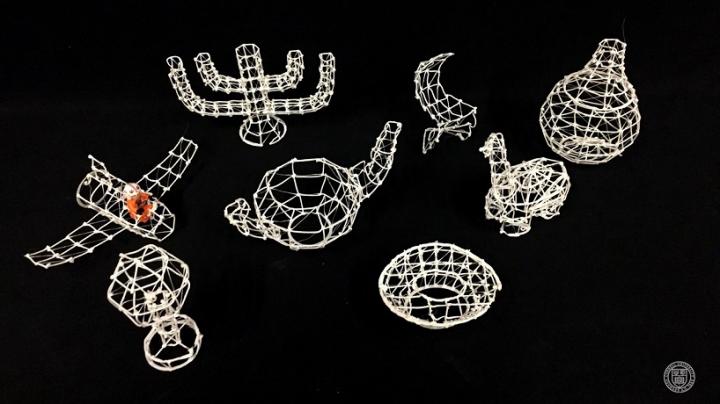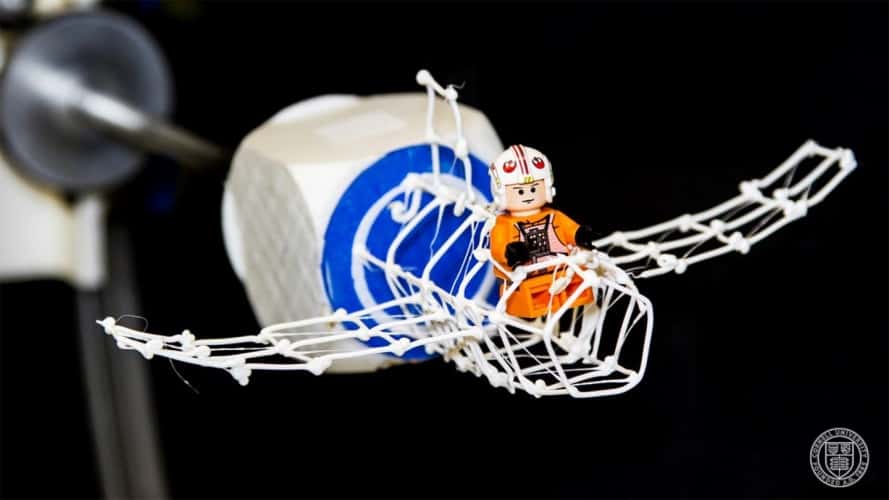Described as an On-the-Fly-Print system, its creators believe it has the potential for rapid prototyping, with designers able to make adjustments to their CAD models as they proceed. During printing, it is possible to pause anywhere in the process to test, measure and, if necessary, make changes that will be added to the physical model still in the printer.
"We are going from human-computer interaction to human-machine interaction," said Cornell graduate student Huaishu Peng, one of the authors of the research paper, which the team presented at the 2016 ACM Conference for Human Computer Interaction. “We believe that this approach has the potential to improve the overall quality of the design process."

The system uses a WirePrint technique where a thin stream of quick-hardening plastic is printed to create a frame that represents the surface of the object described in a CAD file. The nozzle can only operate vertically, but the printer's stage can be rotated whereby any side of the model is facing up. An aircraft fuselage, for example, can be turned on its side to add a wing. The system also includes a cutting tool to remove parts of the model where necessary.

A removable base aligned by magnets means the user can take the model out of the printer and inspect it, check that the dimensions are correct, then return it precisely to its original position and resume printing.
To demonstrate these capabilities, the team printed a model plane designed to fit the scale of a Lego airport, cutting out a cockpit to accommodate a Lego pilot. According to the researchers, they paused the printing process frequently to check if the wingspan fit the runway, and the entire process was completed in 10 minutes.




Poll: Should the UK’s railways be renationalised?
I think that a network inclusive of the vehicles on it would make sense. However it remains to be seen if there is any plan for it to be for the...